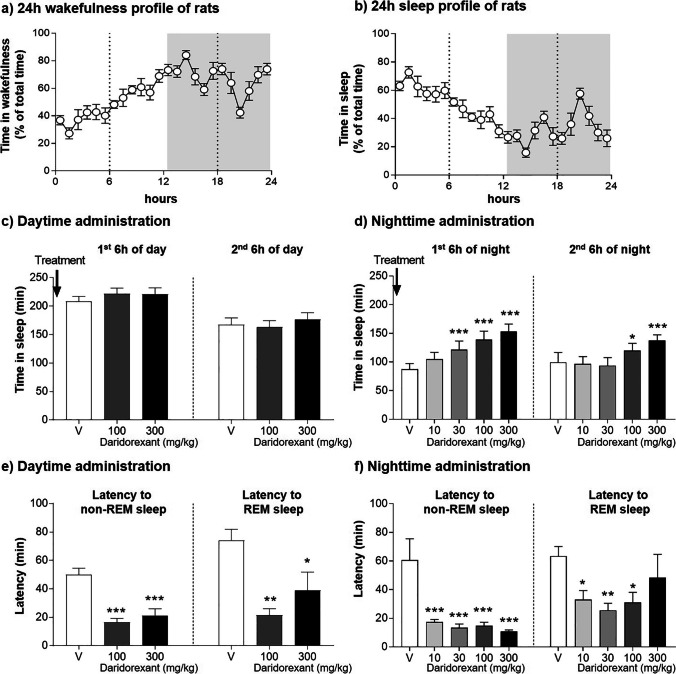Fig. 3.
Efficacy of day- or nighttime administration of daridorexant on sleep promotion in rats. Rats are nocturnal animals as illustrated by the wakefulness (a) and sleep (b) profile over 24 h, depicted in 1 h bins; wakefulness is higher during the 12-h dark phase (gray rectangle). Orexin neurons are active during wakefulness, and highest orexin-A levels in CSF are observed towards the end of the night phase in rats to support wakefulness stabilization when sleep pressure is increasing (Gotter et al. 2013). Orexin-A levels rapidly fall upon sleep. The effect of vehicle (V) or 10, 30, 100, or 300 mg/kg daridorexant on the time spent sleeping (non-REM and REM summarized) following single administration at the beginning of the daytime (c) or nighttime (d) is summarized by periods of 6 h. Latency to persistent non-rapid eye movement (NREM) sleep (≥ 60 s) and persistent rapid eye movement (REM) sleep (≥ 30 s) was compared to vehicle following daytime (e) or nighttime administration (f) of daridorexant. Daridorexant was formulated in vehicle (methylcellulose 0.5% in water). Daytime and nighttime administration experiments are two independent crossover studies with n = 8 rats each. Data are expressed as mean ± standard error of the mean. One-way ANOVA performed separately for the first and second 6 h of day or night, followed by the post hoc Dunnett’s multiple comparisons test: *p < 0.05, **p < 0.01, ***p < 0.001 vs. vehicle-treated rats. Data-on-file. Further experimental details provided by Boss et al. 2020

